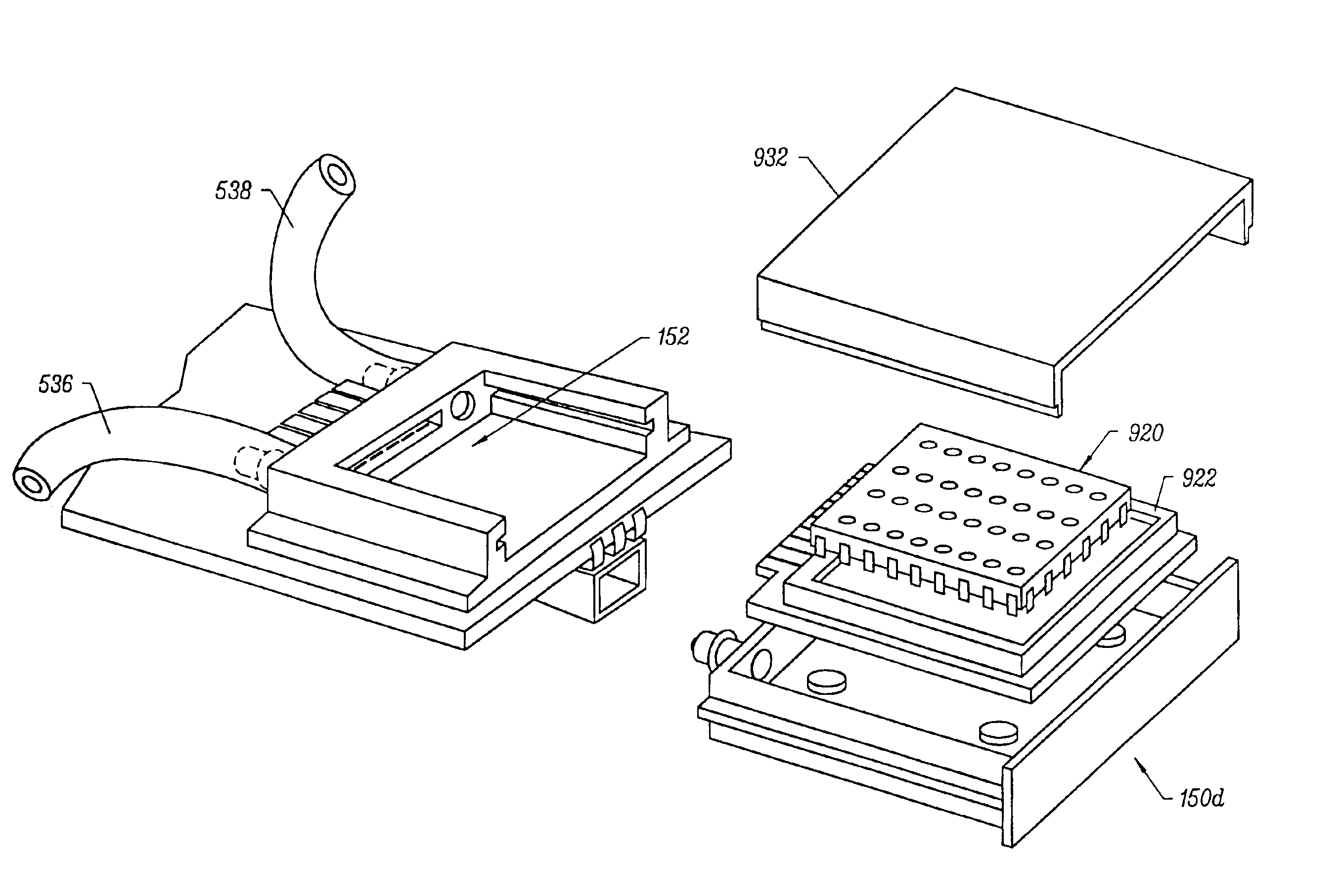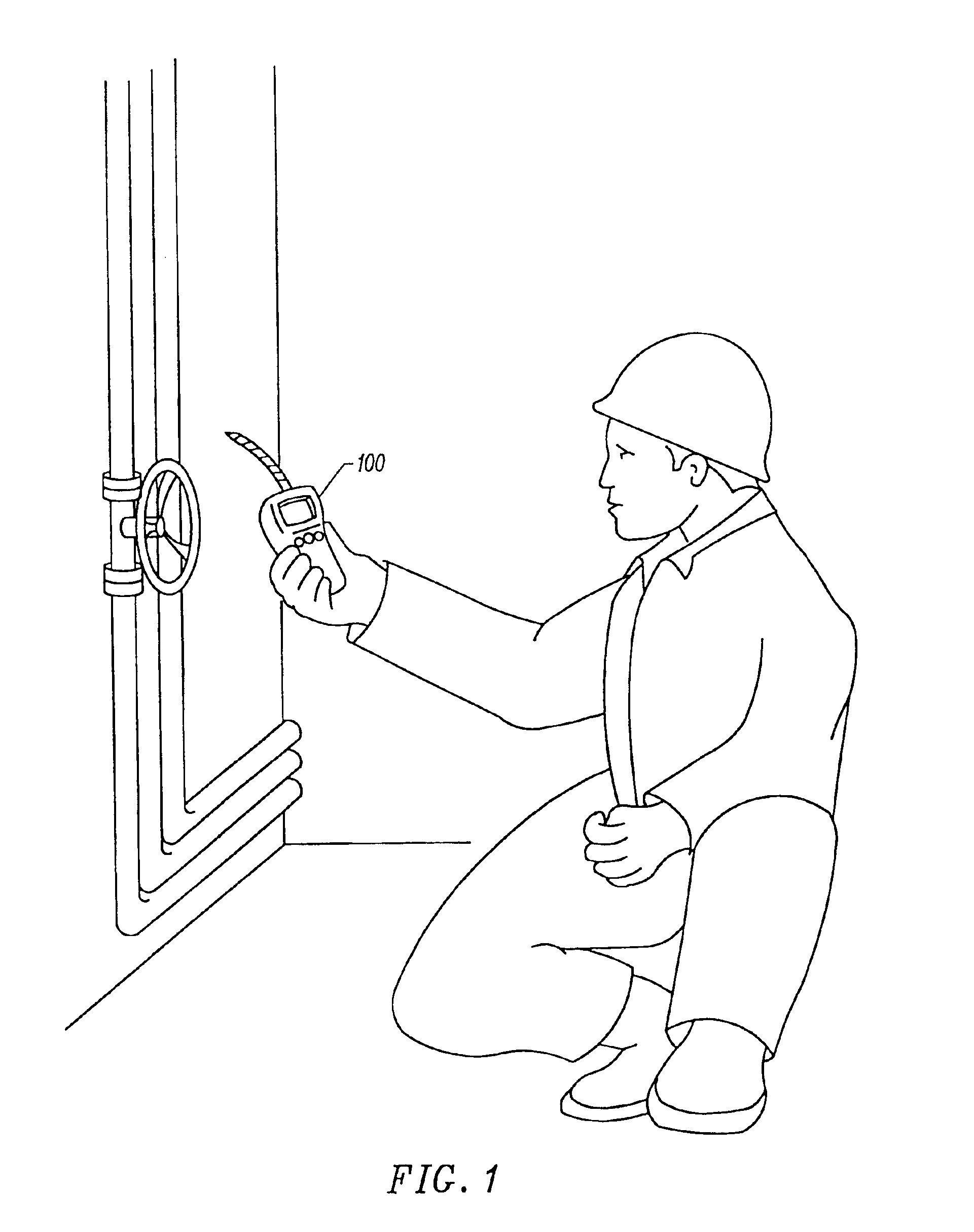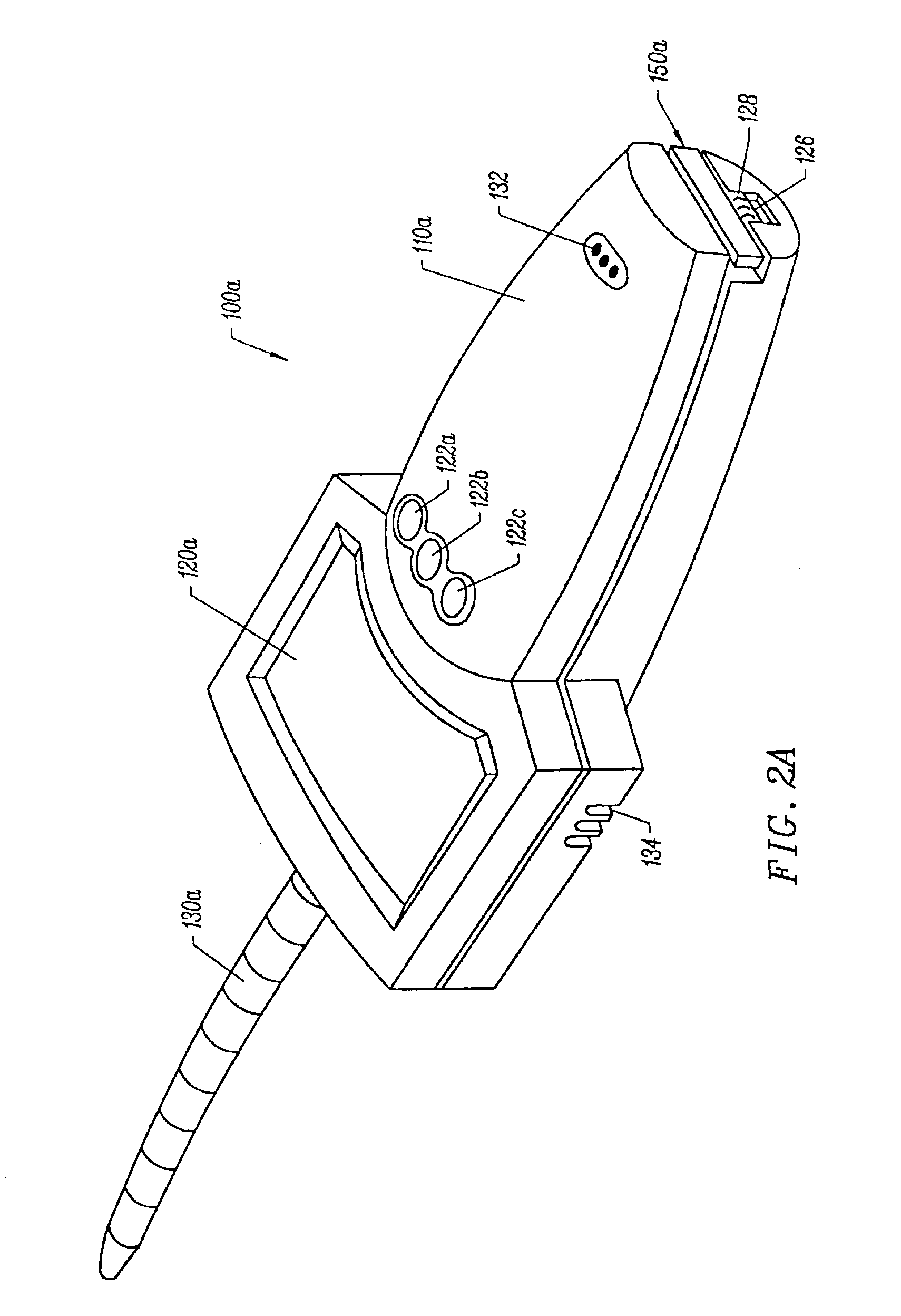Portable sensor
a portable, sensing technology, applied in the direction of gas analyser construction details, simultaneous indication of multiple variables, instruments, etc., can solve the problems of large, cumbersome laboratory models, inability to use in the field and pilot plant applications of electronic noses, and the portable chemical detectors that have been developed so far have many limitations, etc., to achieve enhanced performance, reduce cost, and increase utility
- Summary
- Abstract
- Description
- Claims
- Application Information
AI Technical Summary
Benefits of technology
Problems solved by technology
Method used
Image
Examples
Embodiment Construction
[0042]FIG. 1 shows a pictorial view of an operator using an e-nose device 100 of the invention. In the embodiment shown in FIG. 1, e-nose device 100 is a portable, handheld instrument for sensing the presence of one or more specified analytes in a particular sample. As use herein, a sample is a unit of a vapor, liquid, solution, gas, solid, or other forms, and mixtures thereof, of a substance being analyzed. Thus, a sample includes chemical analytes, odors, vapors, and others. The sample can comprise a single analyte or a plurality of analytes. In FIG. 1, e-nose device 100 is used for industrial monitoring and detection, i.e., to identity and quantify noxious gas escaping from an industrial valve assembly. E-nose device 100 can also be used for many other applications, as enumerated below.
[0043]FIG. 2A shows a top perspective view of an embodiment of an e-nose device 100a. E-nose device 100a includes an elongated housing 110a having a lower end sized to be conveniently grasped and s...
PUM
| Property | Measurement | Unit |
|---|---|---|
| length | aaaaa | aaaaa |
| length | aaaaa | aaaaa |
| size | aaaaa | aaaaa |
Abstract
Description
Claims
Application Information
 Login to View More
Login to View More - R&D
- Intellectual Property
- Life Sciences
- Materials
- Tech Scout
- Unparalleled Data Quality
- Higher Quality Content
- 60% Fewer Hallucinations
Browse by: Latest US Patents, China's latest patents, Technical Efficacy Thesaurus, Application Domain, Technology Topic, Popular Technical Reports.
© 2025 PatSnap. All rights reserved.Legal|Privacy policy|Modern Slavery Act Transparency Statement|Sitemap|About US| Contact US: help@patsnap.com



